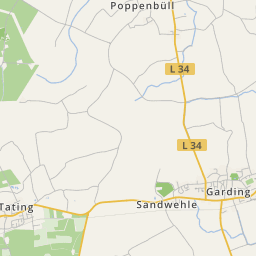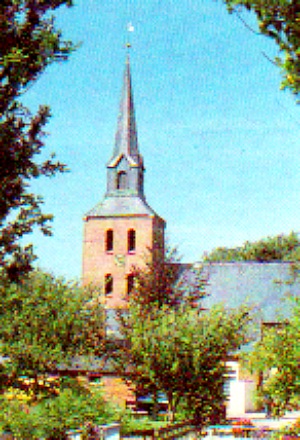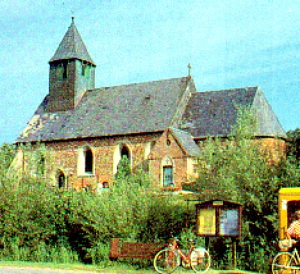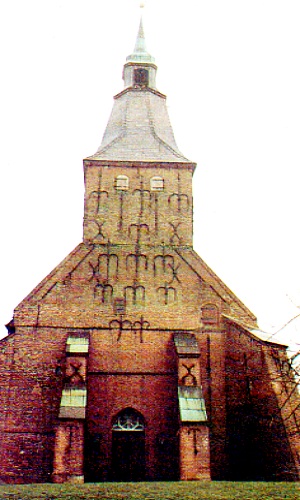












All, who meet Eiderstedt's countryside for the first time, will remark on the wealth of historical churches. There are not less than 18 buildings, nearly all founded in the 12th-century. Then Eiderstedt was made up of the three islands Eiderstedt, Everschop and Utholm, which are still alive today.

Every island had their own main church (Tönning, Garding, Tating), where further so-called county chapels settled because of the bad state of paths. Apart from this reason for the wealth of churches is the prosperity of the marsh inhabitants to mention, which expresses itself among others in very valuable church furnishings.

Art-historically a strong Dutch influence (painting altar in Garding, Oldenswort, Katharinenheerd a.o.) can be detected. Nearly consistently in all churches, artistically high-quality triumph cross groups (St. Peter-Ording, Garding, Kotzenbüll and Tönning), the lectern of the so-called 'Eiderstedter Types' (Garding, Witzwort a.o.) can be found. Typical for the décor of the Last Supper benches (Garding, Kotzenbüll, Osterhever, Tönning a.o.).
Some of the old cultural equipment from the pre-reformation time has been conserved, like an old smoking barrel (Tating), a gothic singers music stand (Kotzenbüll), even a late romantic goblet (Kating).
Organs arrived early on in the churches. The oldest prospect can be found in the Gardinger church and stems from the year 1512. Further well worth seeing prospects are at the churches in Koldenbüttel, Oldenswort, Kating and Tönning. Schleswig-Holstein's oldest bell hangs in the Katinger church and Garding looks after Schleswig-Holstein's oldest clockwork.